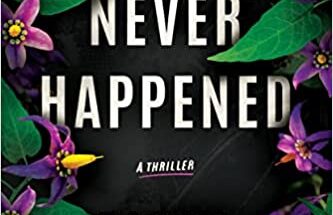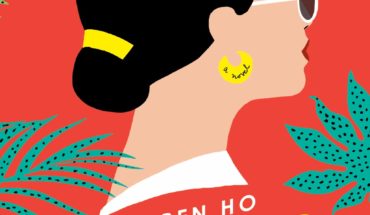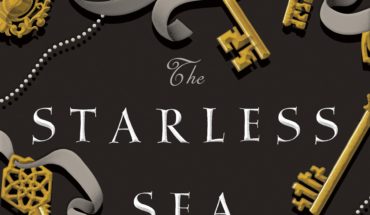 Julia Fine’s debut novel What Should Be Wild, (Harper, 2018) is a modern gothic fairy tale, animated with toppled tropes and dark, unexpected secrets. The novel follows Maisie, a young girl cursed with the power to give and take life with a touch. As Maisie comes of age, she must search within herself, dig into her family’s dark history, and venture into the mysterious forest behind her home to understand the nature of her curse and who she is.
Julia Fine’s debut novel What Should Be Wild, (Harper, 2018) is a modern gothic fairy tale, animated with toppled tropes and dark, unexpected secrets. The novel follows Maisie, a young girl cursed with the power to give and take life with a touch. As Maisie comes of age, she must search within herself, dig into her family’s dark history, and venture into the mysterious forest behind her home to understand the nature of her curse and who she is.
Fine reclaims the classic fairy tale forest and populates it with bold female characters, all of whom add to the evolving conversation of what it means to be a woman and a feminist. My absolute favorite character in this lyrical book is the forest itself. The woods terrified, comforted, and called to me. I now find myself meditating on What Should Be Wild as I walk in the forest near my own home and wonder who is hiding among the trees watching me.
What Should Be Wild has been named to several book lists, including the Chicago Review of Books’ The Best Books of 2018 So Far, and has received starred reviews in Publishers Weekly and Library Journal. The San Francisco Chronicle calls Fine a “formidable new talent.”
Julia, welcome to DeadDarlings. As a community of writers, we always love to hear from debut authors! Your protagonist, Maisie, is headstrong, naïve, brave, and funny at times. But there is also a darkness in Maisie that even she seems unaware of through most of the book. I read this darkness as an embodiment of her desires, of the things many young girls and women are taught to fear, suppress, or feel shame about. Was it always your intention to write this book with such powerful feminist themes, or did they emerge as you wrote?
You’re definitely reading the darkness in the same way that I do—although one of the exciting things about sending the book out into the world has been watching the ways different readers find their own meaning in the forest and the black-eyed girl. I knew pretty early on that I wanted to write the kind of book I wish I’d read in my late teens and early twenties, when I was beginning to understand feminism as more than a catch phrase. I wanted Maisie’s journey to be something like my own—a convoluted, constant reevaluation and reiteration of what it means to come of age as a woman. I had a specific, formative experience in college that forced me to look at how I’d been socialized to want certain things that I didn’t actually want, to defend behaviors that were indefensible, and to have a fraught relationship with my own body. Maisie’s experience is that realization magnified. It can be tough to come to terms with the aspects of yourself that you’ve been told are unappealing, whether it’s that extra twenty pounds or lusting after the wrong person or being unable to contain your jealousy—and it’s difficult to see yourself emotionally kowtowing to societal expectations that you disagree with on an intellectual level. But these inconsistencies are okay.
I was mad at myself for not being a more vocal feminist sooner, but researching Maisie’s ancestors helped me understand how entrenched these ideas are in western culture, and let me forgive myself. I’ve tried to connect all these fairy tale tropes with actual historical female experiences and examine the way the stories we are told and tell as women influence how we create a self. I know I’m looking at a fairly narrow, hetero-normative slice of womanhood here—I definitely don’t claim to speak for every type of female experience—but I like to think I’ve captured something of the archetypal fairy tale women and released them, I suppose, into the wild.
The forest acts in intelligent, malevolent, and seductive ways. I experienced a creepy sense of foreboding, with echoes of Hansel and Gretel, Little Red Riding Hood, and Snow White, every time you lured me into the woods. At the same time, the forest is tender, beautiful, and beguiling. I was drawn to the consciousness and the unpredictability of the woods. Can you talk about how you developed the “character” of the forest?
Yes! The forest is definitely its own character, with its own personality. I read a wonderful book called The Hidden Life of Trees by Peter Wohlleben that talks about the ways trees feel and communicate. A lot of the “magic” of the forest is actually based in science—trees can warn each other about predators, they have seniority and respect for their elders, they share resources. Of course, I was also inspired by fairy tale forests. I grew up on Stephen Sondheim’s Into the Woods and the Brothers Grimm, and always loved the idea of the forest as a wild, liminal place. William Blake talks about an Eden run amok and the dangerous feminine sexuality of a forest, which is an idea that also shows up in Spencer’s The Faerie Queen. So many fables and fairy tales have this binary of town versus forest, which represents Christians versus pagans, or realism versus fantasy, or chastity versus lust. I wanted my forest to be all of those things—poetry, female sexuality, pagan ritual—combined in a beautiful and sympathetic way.
There are two distinct worlds in What Should Be Wild: inside the forest and outside the forest. The rules, the movement of time, even your language changes as you shift between worlds. As a writer, was it challenging to move back and forth? When you wrote the historical scenes and the scenes in the forest, did you know from the beginning how and where they would slot into the main story that follows Maisie in the present-day, outside world?
Jumping between the two different parts of the book wasn’t especially difficult while writing, but structuring and pacing was a challenge. I knew that I wanted each of the fables Maisie hears growing up to correspond to a different Blakely woman’s story, and I churned out both fables and backstories relatively quickly. The issue was then deciding how and when to show the reader what was going on in the forest, how much one-to-one correspondence we needed between the women and what was happening to Maisie, and where to include the historical scenes. An early draft of the book had all the Blakely backstories at the beginning, before we meet the black-eyed girl. My editor at Harper—the phenomenal Erin Wicks—felt we’d get more out of the backstories if readers had already met the Blakely women in the forest. This meant totally restructuring the forest scenes, writing new ones, and grappling with how to introduce seven women over the course of a few paragraphs.
In Maisie, you create a character who has the ultimate control over Nature: the power to give and take life with a touch. I can think of several other literary characters who have the ability to kill or transform with a touch or a look. I’m thinking of Medusa, King Midas, Rogue, and others. But their gifts/curses only go in one direction. Maisie, however, can both take and give life. What inspired this dual gift/curse?
I arrived at the dual nature of Maisie’s power before I’d done much research, but I do remember reading a lot of Dylan Thomas’ poetry in my early writing days. His work really connects human life with nature—“the force that through the green fuse drives the flower drives my green age”, etc.—and makes you think about the way dead trees, leaves, and other parts of the forest become fertilizer for new life. Looking at human death as a metaphorical fertilizer has definitely helped me through some of my own existential crises. I tell my writing students to lean into their fears, and What Should Be Wild is a prime example of my decision to stare down the monster. The duality of the curse also seemed like the perfect metaphor for the way the world sees women’s bodies—sexy and fertile, but dangerous.
Why was Maisie able to touch the dog, Marlowe, without killing it? By allowing her to touch the puppy, you broke the rules of the world you established, which left the tiniest crack in the curse, a sliver of hope that maybe she could break free of it. What inspired that small, lovely detail?
Marlowe is a gift from the forest. For all its misguided decision-making, the forest loves the Blakely women and wants them to be happy. I think of Marlowe as a stopgap—the forest knows Maisie needs something to get her to puberty, and that knowledge takes the form of an adorable cuddly puppy. From an authorial perspective, Maisie needed something/someone to be close to—without Marlowe she’d be too isolated, too socially awkward, too prone to cruelty. He’s her window into what life can be. Definitely a sliver of hope.
And lastly, what are you working on now?
I’m dipping my toe into my second novel, which is a postpartum poltergeist story inspired by modernist children’s literature and the life of Margaret Wise Brown, the author of Goodnight Moon. It’s shaping up to be just as complicated and feminist and creepy as What Should Be Wild—I’m interested in how both the body and the mind change after giving birth, the way we inherit family legacies of loneliness and trauma, the power of language, and the role that physical objects play in how we create a sense of self. I guess I’ve found my thematic niche. It’s early stages yet, so we’ll see where it goes.
Julia Fine is a graduate of Columbia College Chicago’s MFA program, where she has also worked as a writing instructor. She lives in Chicago with her husband and son.



